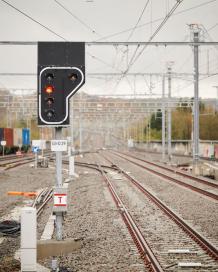The very first railway
Shortly after its independence, Belgium opened the very first railway on the European mainland. That was the railway line between Brussels and Mechelen, festively inaugurated on May 5, 1835. We wrote history then and we can absolutely be proud of that! The king at the time, Leopold I was determined to construct an extensive railway network in our country to support the economy.
The Belgian railway network evolved a lightning speed. Both the Belgian state and private companies contributed to its construction and operation. At the end of the 1800s, the network already consisted of more than 3,000 kilometers of railroad. In 1885 the National Society of Local Railways was founded. Their mission was to connect small towns bij tram or local railway line to the national rail network. But then World War I broke out…

World War I
During World War I, the Belgian rail network fell for a large part into the hands of the Germans. They used the railway lines for the supply of goods and soldiers to the front. But the Allies also put down plenty of temporary railway lines between the Westhoek and France.
Both the German army and that of the Allies also used railway guns. The damage from the war was enormous: more than 1,000 kilometers of railroad took a hit, while many railway bridges were reduced to rubble. And sadly, 2,000 rail workers gave their lives during the Great War.
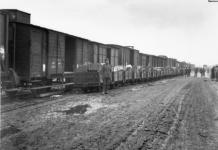
Founding of the National Railway Company of Belgium
In 1926 the government established the National Railway Company of Belgium (NMBS/SNCB). The railway company received a contract for 75 years. The nationalization of the Belgian railways was complete in 1958. The entire rail network has since been in the hands of the government.
From the 1930s, the steam trains were gradually replaced by electric railways. The first electric railway line was from Brussels North to Antwerp Central in 1935. The NMBS/SNCB also had ambitious plans for the rest of the railway network.
Unfortunately, the World War II threw a spanner in the works.
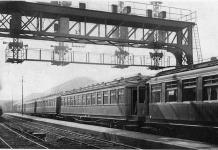
World War II
The railways also played an important role in the World War II. Travelers were barely able to take a train during the war – because most trains rode for the German army.
By the time the war ended, a large part of the railway network had been completely destroyed by bombings. For several years, the focus was on repairing the damage. There was no longer any question of the ambitions plans of the 1930s. Because at that time road traffic also started to take off, some smaller railways operated at a loss. These were removed.
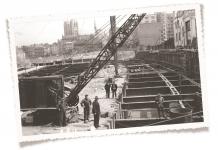
The electrification and modernization of the railways
In the 1950s, the NMBS/SNCB resumed plans for electric railways. The diesel trains were gradually replaced by electric trains!
In 1952, the Brussels North-South connection, an underground rail connection between the Brussels South and Brussels North stations, came into service. This connection soon became the main artery of the Belgian rail network. The construction of the Kennedy tunnel near Antwerp was also an important step for train traffic in Belgium.

The first high-speed line (HSL) is put into service.
Belgium opens its first high-speed line (HSL 1), which reduces travel times between Paris and Brussels. Trains run at 300 km/h on an almost straight line between Hal, in Flemish Brabant, and Wannehain, on the French border. This first line will be followed by three other high-speed lines: HSL 2 between Leuven and Ans (2002), HSL 3 between Chênée and Hergenrath (2009) and HSL 4 between Antwerp and the Dutch border (2009). These railway infrastructures improve train connections between Belgium, France, the Netherlands, and Germany.
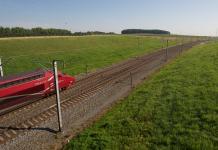
Reopening of a track on line 147 Fleurus-Auvelais
The reopening of a track on line 147 between Fleurus and Auvelais is an important step in the creation of a freight line between the port of Antwerp, the Grand Duchy of Luxembourg and beyond, towards Switzerland and France. It separates goods and passenger traffic between Ottignies and Namur. This has major benefits for traffic flow!
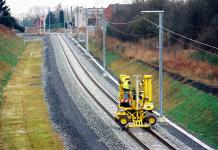
Modernisation between Dinant and Athus
The electrification of the Dinant-Bertrix-Athus section at 25 kV AC creates a new route which will first and foremost be used by freight trains. This frees up line 162 (Brussels-Namur-Luxembourg) for passenger trains. A modernisation that is carried as a follow-up to the reopening of the track between Fleurus and Auvelais (2001).
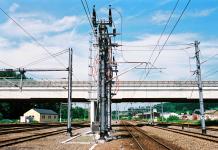
Aubange connecting curve
The connecting curve from Aubange to Mont-Saint-Martin is put into service. This new infrastructure makes it possible for train traffic to transit to south-east France without crossing the Grand Duchy of Luxembourg.
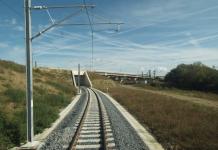
The liberalization of the rail sector
Rail freight transport was fully liberalized in 2005. This means that from then on, various private companies could transport goods via the rail network.
To make this free competition possible and to follow European directives, the Belgian railways adjusted their structure. Greater independence was needed between transport companies that offered passenger and freight transport, and an infrastructure manager who owned the rail network. This was the only way the various transport companies could have the same opportunity to use the rail network.
This is how the NMBS/SNCB Group was formed, which consisted of 3 independent companies:
- NMBS/SNCB, carrier or operator;
- Infrabel, infrastructure manager (learn everything about our activities here);
- NMBS Holding, responsible for personnel management, IT and the 37 largest stations and for coordination between companies.

Complete electrification of line 24
Line 24 between Visé and Aachen is strategic for freight transport between Belgium and Germany. Thanks to the electrification of the section between Montzen station and the border, it is no longer necessary to change locomotives (diesel – electric) on the busiest route of our country. These works improve significantly the commercial speed, with heavier convoys capable of pulling more tons.
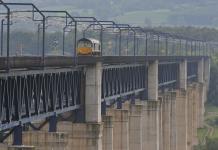
Diabolo project
The creation of the Diabolo improves the service to and from Brussels National airport, which had until then been on a dead-end railway line and was only accessible from line 36 Brussels-Louvain-Liège. Thanks to this new infrastructure, the Brussels-Antwerp line offers a direct access to the airport through a connection with line 25N.
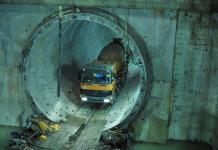
Simplification of the Belgian railways
The NMBS immediately wanted to build its service around the customer. That is precisely why the three-fold structure of the NMBS/SNCB Group has been simplified. Since January 1, 2014, NMBS/SNCB Holding and NMBS/SNCB have merged. This merger also meant the creation of a dual structure with Infrabel as infrastructure manager and NMBS/SNCB as operator. HR Rail, then the new subsidiary, became responsible for the recruitment and management of the staff of both companies.
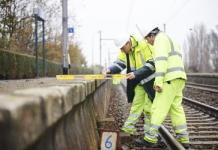
Liefkenshoek Tunnel
The tunnel, intended for freight traffic, connects the two banks of the River Scheldt in the port of Antwerp in order to support the growth of the port. This new 16.3 km rail link offers a considerable time saving of almost 45 minutes for train traffic within the port. It also improves access to the port for freight traffic heading west (Ghent, France, Channel Tunnel, etc.). It is equipped with all the necessary safety equipment and enables convoys transporting dangerous materials to avoid the old railway tunnel (Kennedy tunnel).
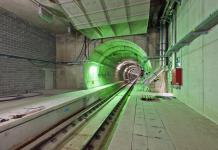
Commissioning of the Schuman-Josaphat tunnel
In addition to the Diabolo (2012), the opening of the Schuman-Josaphat tunnel is another key factor in improving rail access to Brussels National Airport from Charleroi and Namur and to the European Quarter from Antwerp and Leuven. It avoids a detour via Brussels-North station to access these centres. This shortened journey times by 15 minutes!
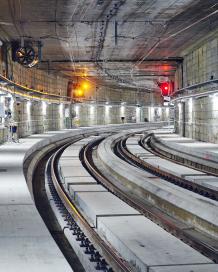
RER relaunch
The resumption of work between Nivelles and Moensberg (line 124) and between Watermael and the Louvain-la-Neuve junction (line 161) marks a new step towards an extended train offer within a 30 km range of the capital. In the long run, this will facilitate access to and from Brussels for many commuters and travellers. The works involve upgrading the railway lines to four tracks and modernising the stations and stops to facilitate access for people with disabilities. A first step on the Flanders side was formalised in 2018, with the completion of the upgrading to four tracks on the section of line 50A between Anderlecht and Ternat.
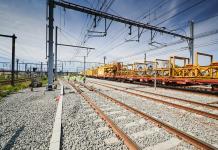
Rail bypass in Mechelen
The bypass at Mechelen station is a 3.2 km railway line with two additional tracks that extends the route from Brussels. It allows high-speed trains to continue their journey at a high speed between the Netherlands, Antwerp, and Brussels.
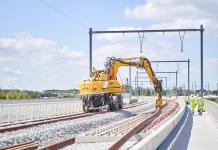
Electrification between Mol and Hamont
The electrification of line 19 improves the rail service between Mol and Hamont on the one hand, and Brussels and Antwerp on the other, thus allowing electric traction on all train connections on these lines. The work also includes raising four bridges and installing two new traction substations to provide electricity to the rail network.
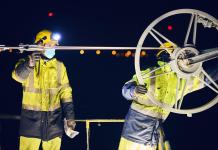
Electrification between Genk and Bilzen
Between Genk and Bilzen, the electrification of line 21C offers an alternative route for the freight line between Antwerp and Germany, an essential link for rail freight. It is part of the government's objective of increasing freight transport by rail from the port of Genk, to the detriment of road transport, which is more damaging to the climate. This project benefited from a European Union intervention via the "Recovery and Resilience Facility" fund.
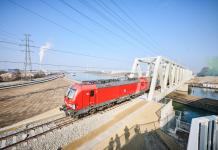
Concentration of signalling boxes
Infrabel completes the concentration program of its signalling boxes. From 368 in 2005, their number is reduced to 10, placed at strategically important railway junctions on the network. This revolution marks the transition to the full computerisation of train traffic management. Costing a total of one billion euros, this investment will allow cost savings of around 130 million euros per year.

Marshalling yard in Zeebrugge
The completion of the modernisation of the shunting yard in Zeebrugge gives the port of Zeebrugge an additional asset in its development. With its 18 tracks, the station now has two rail yards. The first is the one in Zwankendamme and the second is the Zeebrugge shunting yard. Thanks to this development, freight trains will no longer have to cross the parallel passenger line.
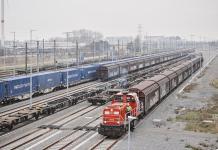
Complete electrification between Hasselt and Mol
In September, the first electric train ran between the two cities. The electrification of the line required the installation of 1,250 catenary poles. In addition, two traction substations were built at Leopoldsburg and Zolder. A new sectioning station at the Zonhoven junction was also built. Finally, some bridges were raised and renovated. All passenger lines in Limburg are now electrified!
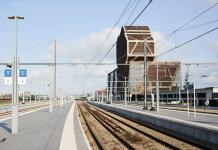
Louvain-la-Neuve junction
Four tracks now link Ottignies station to the junction towards Louvain-la-Neuve. The two central tracks are reserved for trains to and from Namur, while the two outer tracks are used by S-trains between Brussels and Louvain-la-Neuve. By doubling the tracks on this section, trains to and from Namur no longer clash with and slow down trains to and from Gembloux/Namur, thus improving train punctuality. To achieve this result, four years of work were required, during which new tracks and switches were laid, while the existing rail infrastructure was adapted and rebuilt.
